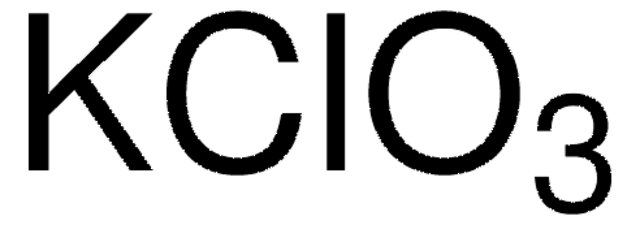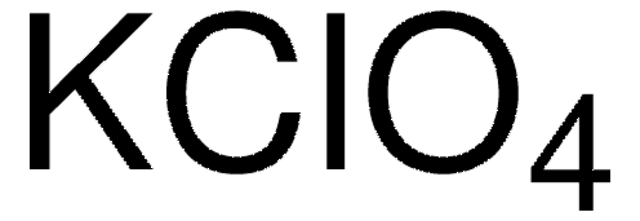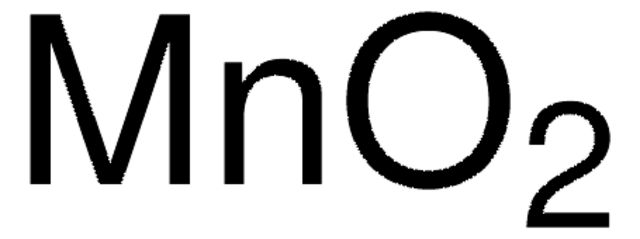About This Item
Recommended Products
grade
ACS reagent
Assay
≥99.0%
form
crystalline powder
impurities
≤0.001% N compounds
≤0.005% insolubles
pH
5-6.5 (25 °C, 61.3 g/L)
mp
356 °C (lit.)
anion traces
bromate (BrO3-): ≤0.015%
chloride (Cl-): ≤0.001%
sulfate (SO42-): passes test
cation traces
Ca: ≤0.002%
Fe: ≤3 ppm
Mg: ≤0.002%
Na: ≤0.01%
heavy metals: ≤5 ppm (by ICP)
SMILES string
[K+].[O-]Cl(=O)=O
InChI
1S/ClHO3.K/c2-1(3)4;/h(H,2,3,4);/q;+1/p-1
InChI key
VKJKEPKFPUWCAS-UHFFFAOYSA-M
Looking for similar products? Visit Product Comparison Guide
General description
Application
- In the sequential extraction (SEP) of selenium to analyze its isotopic composition from various Se pools.
- In the preparation of graphite oxide (GO).
Signal Word
Danger
Hazard Statements
Precautionary Statements
Hazard Classifications
Acute Tox. 3 Oral - Ox. Sol. 1
Storage Class Code
5.1A - Strongly oxidizing hazardous materials
WGK
WGK 2
Flash Point(F)
Not applicable
Flash Point(C)
Not applicable
Regulatory Listings
Regulatory Listings are mainly provided for chemical products. Only limited information can be provided here for non-chemical products. No entry means none of the components are listed. It is the user’s obligation to ensure the safe and legal use of the product.
PDSCL
Deleterious substance
PRTR
Class I Designated Chemical Substances
FSL
Group 1: Oxidizing solids
Chlorates
Hazardous rank I
1st oxidizing solid
ISHL Indicated Name
Substances Subject to be Indicated Names
ISHL Notified Names
Substances Subject to be Notified Names
JAN Code
255572-BULK:
255572-5G:4548173252483
255572-VAR:
255572-500G:4548173125329
255572-100G:4548173125312
Choose from one of the most recent versions:
Already Own This Product?
Find documentation for the products that you have recently purchased in the Document Library.
Customers Also Viewed
Our team of scientists has experience in all areas of research including Life Science, Material Science, Chemical Synthesis, Chromatography, Analytical and many others.
Contact Technical Service







